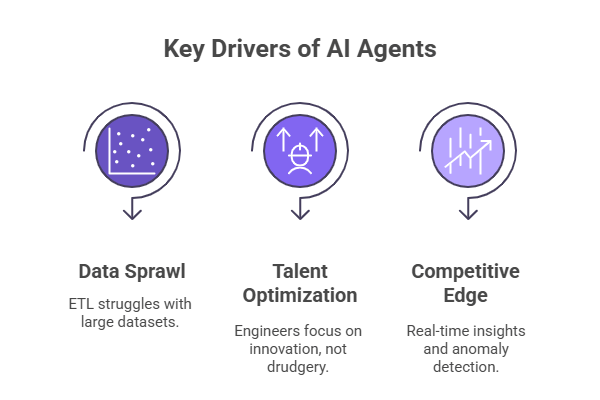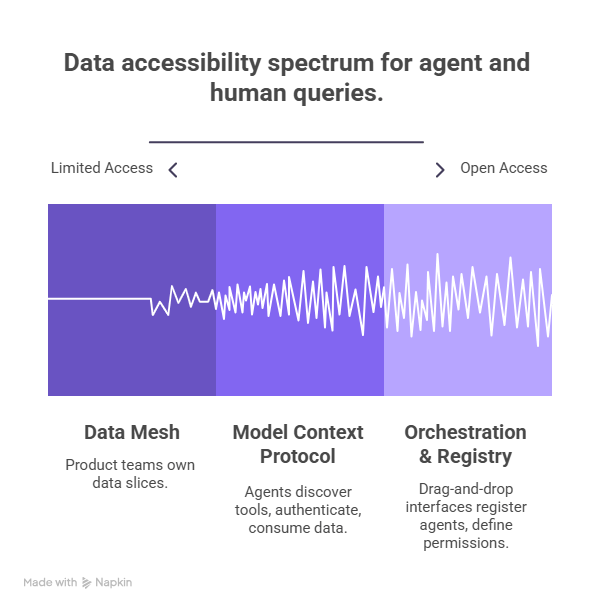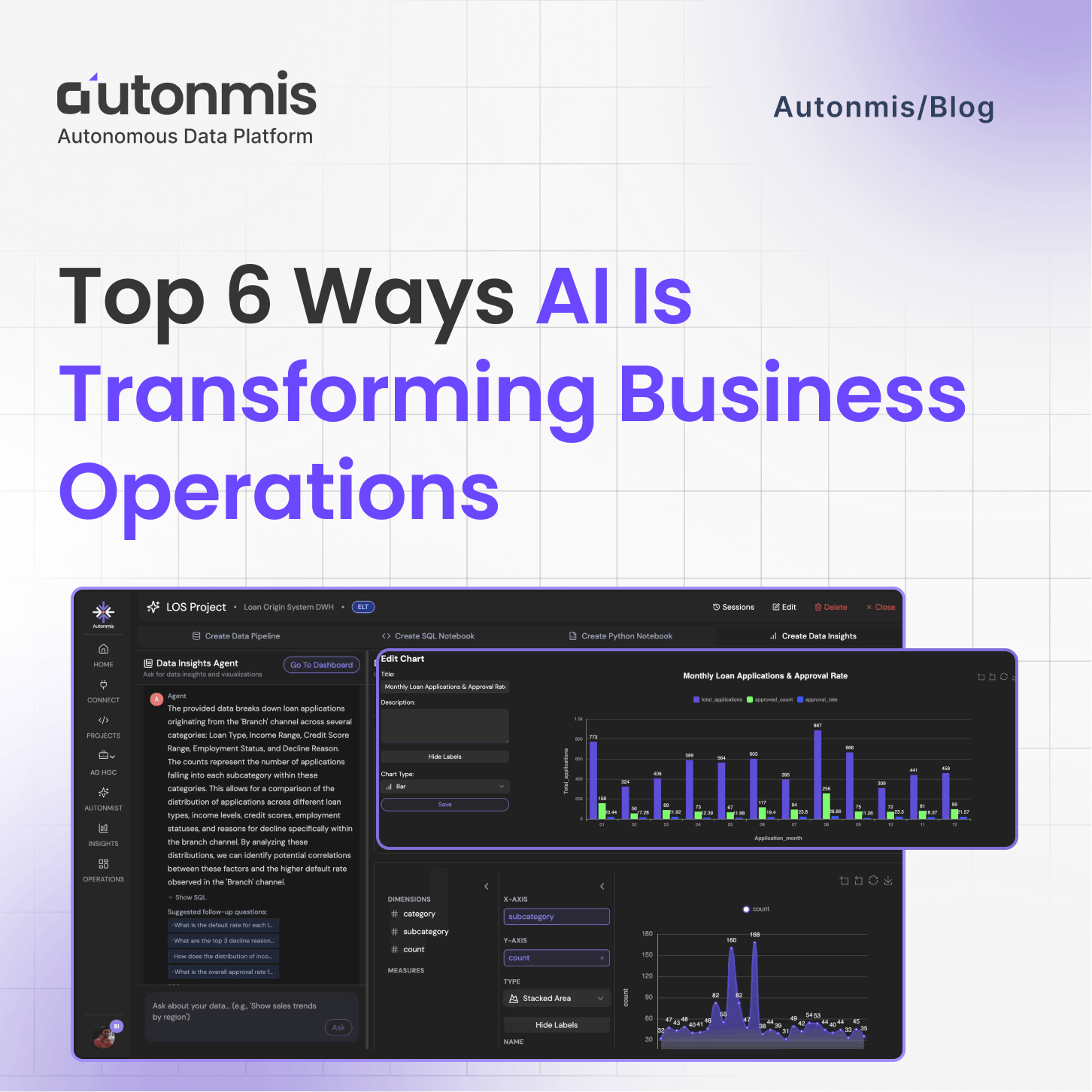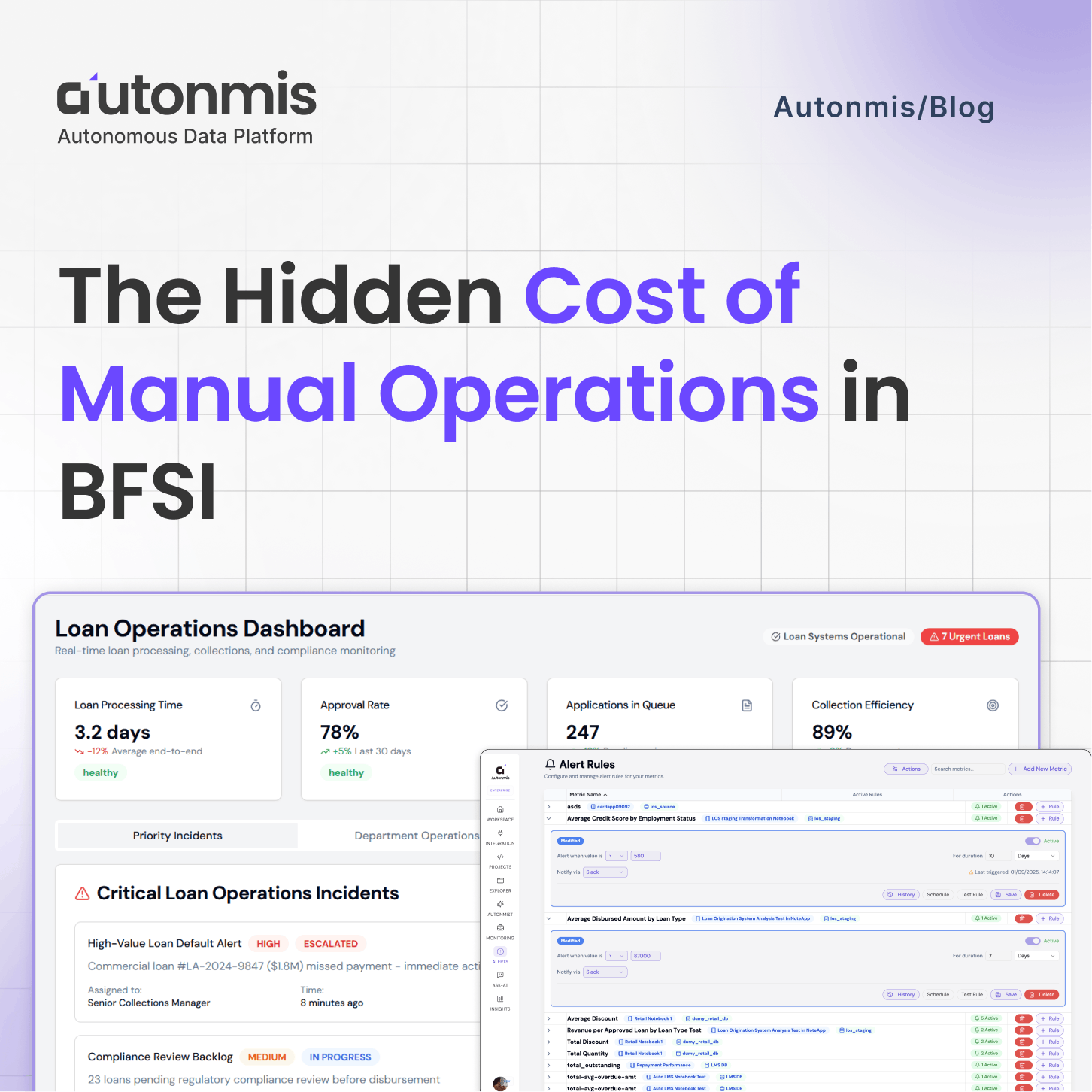3/9/2025

AB
How Agentic AI Powers Autonomous Data Workspace 2025
Agentic AI enables autonomous data workspaces where intelligent agents proactively manage, optimize, and secure data workflows without human intervention. By leveraging technologies like the Model Context Protocol (MCP) and no-code orchestration, these agents deliver faster insights, reduced operational overhead, and a strategic edge in the data-driven economy.

You walk into the office on Monday morning, grab a coffee, and your dashboard already flags a spike in churn - not because you asked your team to run a report, but because your digital data teammate noticed it overnight. That’s agentic AI in action: software agents that think ahead, reason through complex pipelines, and keep your analytics engine humming without constant human babysitting.
Agentic AI - intelligent software agents capable of autonomous decision‑making has matured rapidly in 2025, moving beyond conversational “chatbots” to become proactive partners in data management and analytics.
By embedding these agents within modern data architectures - data mesh, autonomous data products, and standardized protocols like the Model Context Protocol (MCP) - organizations can build autonomous data workspaces in 2025 that self‑service, self‑heal, and continuously optimize themselves. The result is faster insights, lower operational overhead, and stronger data governance, positioning companies to outpace competitors in a data‑driven economy.
Why Agentic AI Matters Now
Imagine assigning routine data tasks - schema inference, anomaly detection, report generation—to intelligent “digital teammates” that run 24×7 without breaks. That’s agentic AI in action: autonomous agents that plan, reason, and execute based on your floor plan of objectives, not just on one‑off prompts.
From Assistant to Autonomous Agent
- Beyond prompts: Agentic AI systems have evolved from reactive tools into autonomous entities that plan, reason, and execute tasks end‑to‑end.
- Industry momentum: Microsoft reports that its AI agent usage has more than doubled since last year, signaling broad enterprise adoption.
- Frameworks and platforms: Major vendors - Microsoft AutoGen, Google’s Vertex AI Workbench, and Informatica’s AI‑powered Cloud Data Management offer integrated support for building and deploying agentic AI in production.
Key Drivers
- Data sprawl & complexity: Traditional ETL pipelines buckle under massive, heterogeneous data sets. AI agents dynamically adapt extraction and transformation logic as data evolves.
- Talent optimization: With engineers freed from manual drudgery, they can architect next‑gen data products and drive innovation.
- Competitive edge: Firms using agents for real‑time insights shorten decision cycles by up to 50% and detect anomalies 30% earlier in IoT scenarios.

What Makes an Autonomous Data Workspace
Let’s break down the three pillars that turn a data platform into a living workspace.
1. Autonomous Data Products
These are domain‑owned, API‑exposed assets (think “self‑serve tables + metadata”) that any agent or human can query instantly. Under a data mesh, each product team “owns” its data slice, and agents automate quality checks, versioning, and SLAs without central tickets.
2. Model Context Protocol (MCP)
Launched late 2024, MCP is an open standard that tells agents how to discover tools, authenticate, and consume data services. No more fragile point‑to‑point integrations - just plug‑and‑play agents that honor governance and consent flows by design.
3. No‑Code Orchestration & Registry
Modern platforms (e.g., Informatica’s AI‑powered Cloud Data Management) offer drag‑and‑drop interfaces to register new agents, define permissions, and assemble multi‑step workflows - all without writing a single line of code.

How Agents Actually Work Day-to-Day
Let me walk you through a common scenario:
- Discovery & Cataloging: An agent harvests metadata from your data lake, infers schemas, tags sensitive fields, and updates the catalog in real time—no manual data steward required.
- Self‑Service Requests: A VP asks, “Show me quarterly churn rates by segment.” Within seconds, an analytics agent spins up the query, validates results against quality thresholds, generates a chart, and posts it to your BI portal.
- Continuous Compliance: Policy agents patrol data usage, flagging GDPR or HIPAA risks before data ever leaves its secure enclave. Every action logs an immutable audit trail for full transparency.
- Model Tuning & Deploy: Machine‑learning agents monitor drift, retrain models when accuracy dips below a set threshold, and orchestrate blue‑green deployments to ensure zero downtime.
A Reference Snippet for Your Team
Here’s a simple YAML example to illustrate how you might onboard a “metadata_harvester” agent via MCP:
Feel free to adapt the schedule, agent images, or tasks for your own environment.
Real‑World Value & Use Cases

- For CXOs: You get on‑demand KPIs you can trust, underpinning strategic pivots.
- For VPs & Data Leads: Your ops teams shift from firefighting to architecting next‑gen data products.
- For Domain Experts: Launch new analytics capabilities without waiting weeks for central IT.
Pitfalls & Best Practices
Even the smartest agents need guardrails:
- Agent sprawl: Track every agent in a central registry; enforce deprecation policies.
- Explainability: Surface decision logs and reasoning chains so stakeholders trust agent outcomes.
- Least‑privilege: Give each agent only the permissions it truly needs, no more.
- Phase rollout: Start in low‑risk zones (metadata management), prove ROI, then expand to core pipelines.
Looking Ahead
By 2026, multimodal agents - combining vision, language, and structured data - will unlock entirely new workflows (e.g., “scan this floor‑plan image, correlate sensor readings, and trigger maintenance”). Organizations that standardize on agentic frameworks today will be the clear winners in tomorrow’s data‑driven marketplace
Recommended Learning Articles

10/23/2025
Top 6 Ways AI Is Transforming Business Operations

9/22/2025

AB
The Hidden Cost of Manual Operations in BFSI
Actionable Operational Excellence
Autonmis helps modern teams own their entire operations and data workflow — fast, simple, and cost-effective.